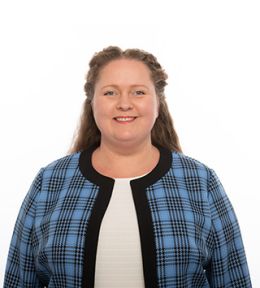MMAE Seminar: 3D Printing, Microstructure, Synchrotron Experiments, and Machine Learning (Dr. Anthony Rollett)
Armour College of Engineering’s Mechanical, Materials, and Aerospace Engineering Department will welcome Dr. Anthony D. Rollett, professor of materials science and engineering at Carnegie Mellon University, on Wednesday, September 9, 2020, to present a lecture on "3D Printing, Microstructure, Synchrotron Experiments, and Machine Learning."
Date and Time: Wednesday, September 9; 3:30-4:30 pm CT
Location: Virtual seminar
Contact: Elena Magnus at magnus@iit.edu for the seminar details and link to join
Abstract
3D printing of metals has advanced rapidly in the past decade and is used across a wide range of industry. Many aspects of the technology are considered to be well understood in the sense that machines make parts and temperature histories with residual stress can be simulated. At the microscopic scale, however, more work is required to quantify, understand and predict defect- and micro-structures, which affect properties such as fatigue resistance. The most dramatic synchrotron-based technique is dynamic x-ray radiography (DXR) which provides ultra-high speed imaging of laser melting of metals and their powders. This has, e.g., enabled the keyhole phenomenon to be quantified, which in turn has demonstrated the importance of power density, as opposed to energy density. This latter quantity, while informative, also fails to capture the crucial boundary between full density and lack-of fusion porosity because it does not take account of melt pool overlap. Synchrotron-based 3D X-ray computed microtomography (µXCT) showed that essentially all metal powders exhibit porosity that partially persists into the printed metal. Defect-based process windows allow the operating conditions for a given printer to be based on the process physics. To illustrate the power of machine learning, Computer vision (CV) has successfully classified different microstructures, including powders. The power of CV is further demonstrated by its ability to detect and classify defects in the spreading of powder. It is also able to distinguish fatigue fracture surfaces according to lifetime. High speed synchrotron x-ray diffraction is beginning to provide new information on solidification, phase transformation and precipitation in, e.g., alloy 718, Ti-6Al-4V and stainless steel. High Energy (x-ray) Diffraction Microscopy (HEDM) also is also providing data on 3D microstructure and local elastic strain in 3D printed materials such as Ti-6Al-4V and stainless steel.
Note: The research is done in collaboration with E. A. Holm1, L. Scime2, S. D. Wolf1, J. Beuth2, T. Ozturk1, R. Cunningham1, C. Kantzos1, S. Yarasi1, J. Pauza1, J. Aroh1, R. E. Lim1, P.-J. Chiang1, S. Oh1, R. Jiang1, G. Tang1, A. Choi1, A. Verma1, A. Mostafaei3, Z. Wu1, N. Parab4, T. Sun5, C. Zhao6
1 Department of Materials Science and Engineering, Carnegie Mellon University, Pittsburgh, PA
2 Mechanical Engineering Department, Carnegie Mellon University, Pittsburgh, PA
3 Amir Mostafaei, Illinois Institute of Technology, Chicago, IL
4 Advanced Photon Source, Argonne National Laboratory, Chicago, IL
5 Department of Materials Science and Engineering, University of Virginia, Charlottesville, VA
6 Tsinghua University, Beijing, China
Biography
Dr. Rollett has been a member of the faculty at Carnegie Mellon University since 1995. He is a Professor in the Department of Materials Science and Engineering and the Co-director of the Next Manufacturing Center on additive manufacturing. Previously, Dr. Rollett worked for the University of California at the Los Alamos National Laboratory. He spent nine years in management with four years as a Group Leader (and then Deputy Division Director) at Los Alamos, followed by five years as Department Head at CMU (up to 2000). He has been a Fellow of ASM since 1996, Fellow of the Institute of Physics (UK) since 2004 and Fellow of TMS since 2011. Dr. Rollett received the Cyril Stanley Smith Award from TMS in 2014, was elected as Member of Honor by the French Metallurgical Society in 2015 and then became the US Steel Professor of Metallurgical Engineering and Materials Science in 2017. He received Cyril Stanley Smith Award from the International Conference on Recrystallization and Grain Growth in 2019 and also the International Francqui Professor for 2019-2020, from the Francqui Foundation, Belgium. Dr. Rollett’s research group is supported by AFOSR, DOE/BES, DOE/EERE, DOE/ARPA-E, NASA, PITA, NSF, Boeing, NextM, and Northrop-Grumman. The research focus is on additive manufacturing, the measurement and prediction of microstructural evolution, the relationship between microstructure and properties, with a particular emphasis on three-dimensional effects, texture and anisotropy and the use of synchrotron x-rays.
Event Contact



